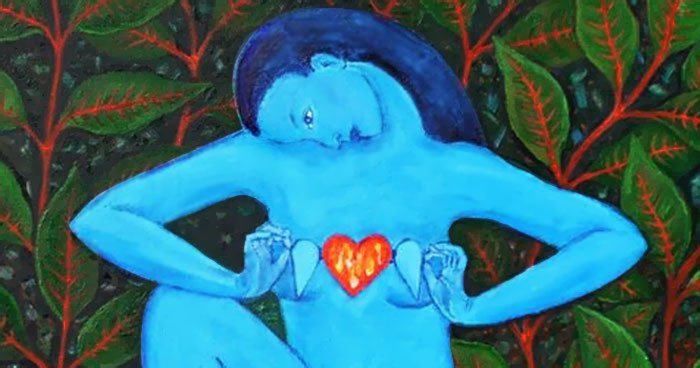The Genuine Heart of Sadness
So we’ve talked about meditation being the vehicle to experience the natural resting state of mind – also called Peaceful Abiding – and that state of being is open, fresh, alert, aware, and pure (unadulterated by conditioning).
Then we looked at definitions of mindfulness and awareness and the tool of gathering the mind
We explored obstacles to Peaceful Abiding and the antidotes to those which were developed by Meditation Masters over the last 2,600 years
That all lays a decent groundwork to discuss some of the experiential subtlety and simplicity of meditation practice AND the genuineness of our human heart.
A basic element of meditation practice is simplicity. This leads to genuineness. We simply let ourselves be, on this earth, exactly as we are. Nothing could be more simple for us and yet it’s so rare in our speedy lives. On top of that, we don’t get a lot of support for simply being, and appreciating our life.
Shamatha Vipashana meditation allows us to just sit, just be a human, and appreciate that. This is genuineness – we are not trying to be something. We are letting ourselves be as we are.
Chogyam Trungpa Rinpoche from Shambhala: The Sacred Path of the Warrior: “A great deal of chaos in the world occurs because people don’t appreciate themselves. Having never developed sympathy or gentleness toward themselves, they cannot experience harmony or peace within themselves, and therefore what they project to others is also inharmonious and confused.
“By meditation here we mean something very basic and simple that is not tied to any one culture. We are talking about a very basic art: sitting on the ground, assuming good posture, and developing a sense of our spot, our place on this earth. This is the means of rediscovering ourselves and our basic goodness, the means to tune ourselves in to genuine reality, without any expectations or preconceptions.
“When you don’t punish yourself or condemn yourself, when you relax more and appreciate your body and mind, you begin to contact the fundamental notion of basic goodness in yourself. So it is extremely important to be willing to open yourself to yourself. Developing tenderness toward yourself allows you to see both your problems and your potential accurately. You don’t feel that you have to ignore your problems or exaggerate your potential. That kind of gentleness toward yourself and appreciation of yourself is very necessary. It provides the ground for helping yourself and others.”
There’s nothing extraordinary about simply being genuine. In fact – as we know – meditation can feel boring. We may feel that there is too much space, too much stillness. We may want to entertain ourselves to fill up that space. However, if we let ourselves rest in that spaciousness and feel that boredom, we begin to soften. We let our hearts open.
It turns out that much of our own speed, agitation, and anxiety are trying to cover-over this soft, open heart of ours. Meditation is learning to let our hearts be exposed and allow ourselves to feel that sad-tender-joy.
Trungpa Rinpoche: “When you sit upright but relaxed in the posture of meditation, your heart is naked. Your entire being is exposed – to yourself, first of all, but to others as well. So through the practice of sitting still and following the breath as it goes out and dissolves, you are connecting with your heart. By simply letting yourself be, you are developing genuine sympathy toward yourself.”
This is what we call awakened heart. If we put our hand through our rib cage to feel for it, there is nothing there but tenderness. There’s a soreness and softness. With eyes opened to the rest of the world, one feels tremendous sadness. Not the kind of sadness from being mistreated or feeling impoverished. Rather this experience of sadness is unconditioned. It happens because our heart is completely exposed.
Meditation practice is training in opening ourselves up. When we allow ourselves to be open and tender, we discover that the world is basically good. We might get hurt at times, but through meditation we can develop confidence that we can work with our mind. This confidence helps us to open more. We can appreciate our lives and appreciate the simple things in our world. We can open up – even if it’s just a tiny bit more than before.
Trungpa Rinpoche: “Real fearlessness is the product of tenderness. It comes from letting the world tickle your heart, your raw and beautiful heart. You are willing to open up without resistance or shyness and face the world. You are willing to share your heart with others.”
When tenderness evolves like that, we can truly appreciate the world around us. Sense perceptions become very interesting things. We are so tender and open that we can’t help opening ourselves to what’s happening all around us. When we see red or green or yellow or black, we respond to them from the bottom of our heart. A tree, a breeze, a bird, the sky, the passing clouds. When we see someone else crying or laughing or being afraid, we respond to them as well.
This tenderness is Basic Goodness. Along with tenderness and feeling a soft spot in our hearts, Basic Goodness is also pure perception. Both perception and warmth are vehicles to opening our hearts and both depend on gentleness as the basis for connecting with the world and with ourselves.
When we feel this tenderness, we also begin to feel a cessation of our inner debates, our struggles over who we are and what we want. From this tenderness comes unconditional confidence: in whatever we do, we can have trust in and fidelity to Basic Goodness, Peaceful Abiding, the natural resting state of the mind – knowing mind.
Confidence in THIS sense is tenderness in action, or as Trungpa Rinpoche once said, “Confidence is the pragmatic aspect of tenderness.” Through understanding Basic Goodness, we are connecting our perceptions, our tender hearts, and our confidence. The result is gradually seeing a genuine person in ourselves who lives bravely and with openness.
By touching in to our tender heart, we touch into the genuineness of ourselves and everything in the world. This is compassion.
When we have empathy for another, we put ourselves in their place, in their shoes. When we do that, we can feel what it would be like to experience what they must be experiencing. When we do that, we engage our hearts in their rawest state – the tender heart of sadness. This is compassion. We say “our hearts go out to them.” This is likely what people are trying to express when they say, “our hearts and prayers go out to you.”
In empathy, connection is being made in a very real way – on an energetic level but no less real than the physical. As compassion arises out of empathy and our tender hearts open, that connection is infused with the most sacred form of our love.
We can deliberately make this connection with ourselves, with others, with animals, with plants, and with situations.



